A letter from Defence Secretary John Healey MP to Caroline Dinenage MP, dated 6 February 2025, has provided an update on the Type 45 Destroyer Power Improvement Project (PIP).
The letter follows discussions in Parliament regarding Russian maritime activity and the UK’s naval response.
Recognising past reliability issues, Project Napier—which includes PIP—was established in 2014 to enhance the availability, resilience, and power systems of the Type 45 Destroyers after previous issues.
“Following a thorough assessment, it was determined that the power and propulsion system was not capable of delivering the desired level of reliability,” Healey explained.
“PIP rectifies this by replacing the existing two diesel generators with three more powerful units.”
While specific details of the integrated PIP programme remain classified, Healey confirmed that two ships have completed the upgrade, with others at different stages of the process:
- Completed PIP: HMS Dauntless and HMS Daring
- Undergoing trials: HMS Dragon (first to undergo PIP in Portsmouth)
- Currently undergoing PIP: HMS Defender and HMS Diamond
- Awaiting upgrade: HMS Duncan, which remains operational but will receive PIP during its next docking period
The Ministry of Defence says it remains committed to ensuring the full Type 45 fleet is upgraded by 2028.
At the UK Defence Journal, we aim to deliver accurate and timely news on defence matters. We rely on the support of readers like you to maintain our independence and high-quality journalism. Please consider making a one-off donation to help us continue our work. Click here to donate. Thank you for your support!


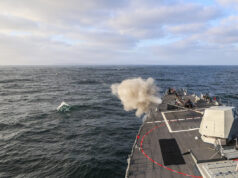
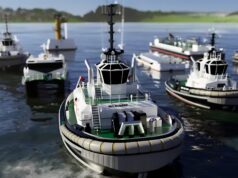
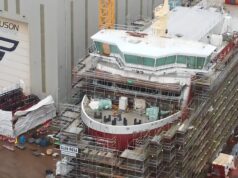
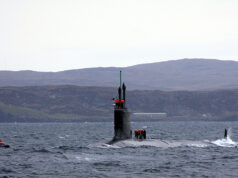
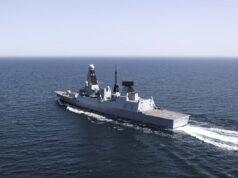

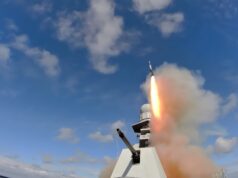
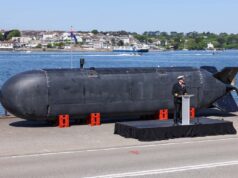
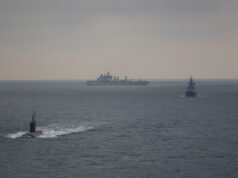
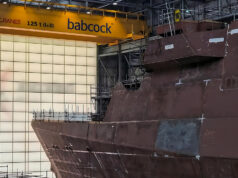

So “Currently undergoing PIP: HMS Defender and HMS Diamond and Awaiting upgrade: HMS Duncan, which remains operational but will receive PIP during its next docking period. The Ministry of Defence says it remains committed to ensuring the full Type 45 fleet is upgraded by 2028”. Does this mean it will take another nearly 2-3 years to complete the PIP on these 3 remaining ships, or could this also mean completion of other upgrades, such as the NSM, extended mushroom farm for Sea Ceptor and Sea Viper ER?
Diamond and Duncan will get Sea ceptors installed as well. There’s also a radar upgrade but don’t know when that’s happening
The Type 45s are not planned to receive the Aster-30 Block 1NT, which has an extended range of >150km. I stead, they will receive the Aster-30 Block 1 with >120km range, the same as the current Block 0.
What is the status of HMS Daring? Supposedly completed PIP but has yet to return to sea……
She is supposed to be returning to Sea sometime this year – hopefully 🤔..
Once all the bits that were STOROB’d from her are screwed back on and got working.
Unfortunately she was used as a donor for her sisters but getting back together is essential now that T23s are so thin on the ground.
Another expensive decision with long term consequences.
Be nice to see all six of them serviceable again as they are brilliant platforms.
I really hope we get more than 6 with the new destroyers.
It was a real mistake dropping from 12 to 6 capability does not and never will replace some of the core benefits of mass. Including the maintenance or development of quality..without mass quality will falter under stress.
12 was always unrealistic and was definitely MoD shooting for the moon…
The real shame was the drop from 8 to 6….because those 6 ships ended up costing as much as 8 would have….
Naval Requirements staff would have built a credible case for 12 units.
Absolutely Jonathan, the T45 replacement needs to be affordable, ( so no 13,000 ton Cruisers please) and we need 9, to ensure 6 are operational.
I would opt for using a stretched, increased draft derivative of T26 platform, so an evolution, rather than a clean sheet design.
If the RN decide to go for a gold plated option, they will be lucky to get four hulls.
T26 is not a good platform to base our next destroyers on
From what I have read some argue that might make a very compromised ship, the T-26 has little capacity itself for adding weight I understand which might not be a problem for itself moving ahead for many years (we will see) but might be difficult to design out of a considerably more capable heavier derivative. Added top weight would be a considerable hurdle in this regard as the Australians have found that required broadening the design dimensions with concerns as a result about maintaining its planned speed. So if we go in this direction we might require a considerable re-design and face unforeseen barriers along the way, thus we have to be very careful to make the right decision and not head down a direction in the name of cost and simplicity if it seriously risks becoming in the end more expensive and more compromised than a whole new design which can however still take much of its influence from T-26.
Type 45 replacement needs more power generation for Radar and direct energy weapons and more VLS cells (96+). So basically this will result in a ship well north of 10k tons.
I would add, we need to include T31’s ferocious twin 40mm and main 57mm gun armament onto the T45 and a production version of Dragon fire, mounted as highly on her significant structure as possible.
The world’s changed since T45 entered service and her weapon systems need to be upgraded to meet the new threats.
Not gonna happen, only new ships are going to get 40mm, and they’re not going to change the main fun after all these refits
Dragonfire is very promising but don’t let’s get ahead of ourselves. The US are testing Helios (60Kw) which is a bit more powerful than DF which is nominally 50Kw presently but that is still considered a step to something more useful, it like DS can bring down smaller drones or shells but little more. For a full capacity laser weapon they estimate a minimum 300Kw will be required which could probably target ballistic missiles, even hypersonics but obviously weather conditions are a consideration. 150Kw lasers are considered a good all-rounder however to aim for. Now DS is scalable but what capacity do T-45 and T-26 have to power it, 60Kw should not be a problem but for much more powerful lasers they may not have the power generation capacity as things stand. It seems it’s not planned to be installed in a fully fledged version before the thirties though lesser versions will perhaps be used prior to that but predominantly like the Americans more for test than truly action ready status.
Sorry by DS I mean DF ie Dragonfire I do miss the editing function here when one has a brain fart.
Could storing charge in large capacitors be the answer? Will add time between firings but it would retain the lower rate anti drone or even blinding capability.
According to a statement on the UK Government website (found via Wikipedia References) they are developing a flywheel energy storage system which has been tested in conjunction with the US. The UK intends this system to be used with Dragonfire.
Flywheel storage is a clever way of storing considerable amounts of energy that can be delivered quite rapidly when the demand is there. Dragonfire is a pulsed weapon, so whilst the power is high the actual total amount of energy delivered per pulse is quite small so the flywheel solution may well provide a significant number of engagements in a short short time, baring in mind that a single engagement will probably utilise quite a few pulses to deliver the required level of damage.
Cheers CR
Hi do you have a rough idea of the efficiency of a Lazer. If it was 25% a 50kW Lazer would need a 200kW supply.
200kW in a pulse is easy for batteries to do and avoids all the effects of a rotating mass being tossed in lots of directions by the sea.
Even 13 to 14 years ago when I was looking at batteries a 50kWh battery could easily provide a 200kW pulse. That’s a typical EV sized battery.
I needed to know to ensure that the fuses we were to use on a project were going to work quickly.
I don’t see a need to use a complicated set up like a flywheel when batteries capable of producing pulses of several MW would only weigh a few tons.
I would expect batteries to be installed in the next generation of ships anyway to avoid the need to run spare generation to cater for the loss of a machine which will save significant quantities of fuel, saving weight or extending range.
A system to do just this is to be installed in Shetland this year to back up a single high voltage DC circuit and allow the power station to go to a standby role only.
Use the expanded T26 as a starter for 10 and lets speed this up for a change. Also need 9/10 not 6 and lets ahead of the game for once
T26 would be a bad destroyer
Stretched Arrowhead?
Even smaller.
Too little margin for weight increase on Type 26. The Australian version added just 8 more Mk41 and a new radar, whilst dropping the CAMM silos, and that required significant redesign.
A clean sheet design would be better.
I tend to agree with you. Upgrading a present design can very soon become self defeating. The US twice contemplated re designing F-22 rather than a clean sheet design, both found it to be more expensive as well as less advanced and one of them determined it would be much, much more expensive.
I sometimes wonder why we always have to re invent the wheel, you just need to look at the US AB’s, Virginias and the Nimitz classes they develop, adapt and ring the maximum out of the base design.
So why not take a look at the T45 design, it was designed from scratch with a bigger hull and a large built in growth margin so what would a NG version AAW. Look like ? Ditch the hanger, replace it with additional VLS, new gun, modernised radar and insert a Twin MT30 / MTU DG setup for extra power.
We’re not ditching the hangar when we have so few ships
I would expect next gen air defense destroyer to have a listen only mode for it’s radar just like sonars on submarines have so that they can’t be detected by their own emissions. So to make it work smallish drones need to be in the air with powerful radar transmitters at locations which don’t give away the location of the ship. Perhaps three or more at a time so that they can shut down if they are approached and let nother one send out signals for a time. So I would see the need for at least six but perhaps a dozen or so drones to allow the vessel to hide. They definitely need a hanger for this plus at least one helicopter capable of transfering crew and materials.
What ever we chose, it will probably be wrong!